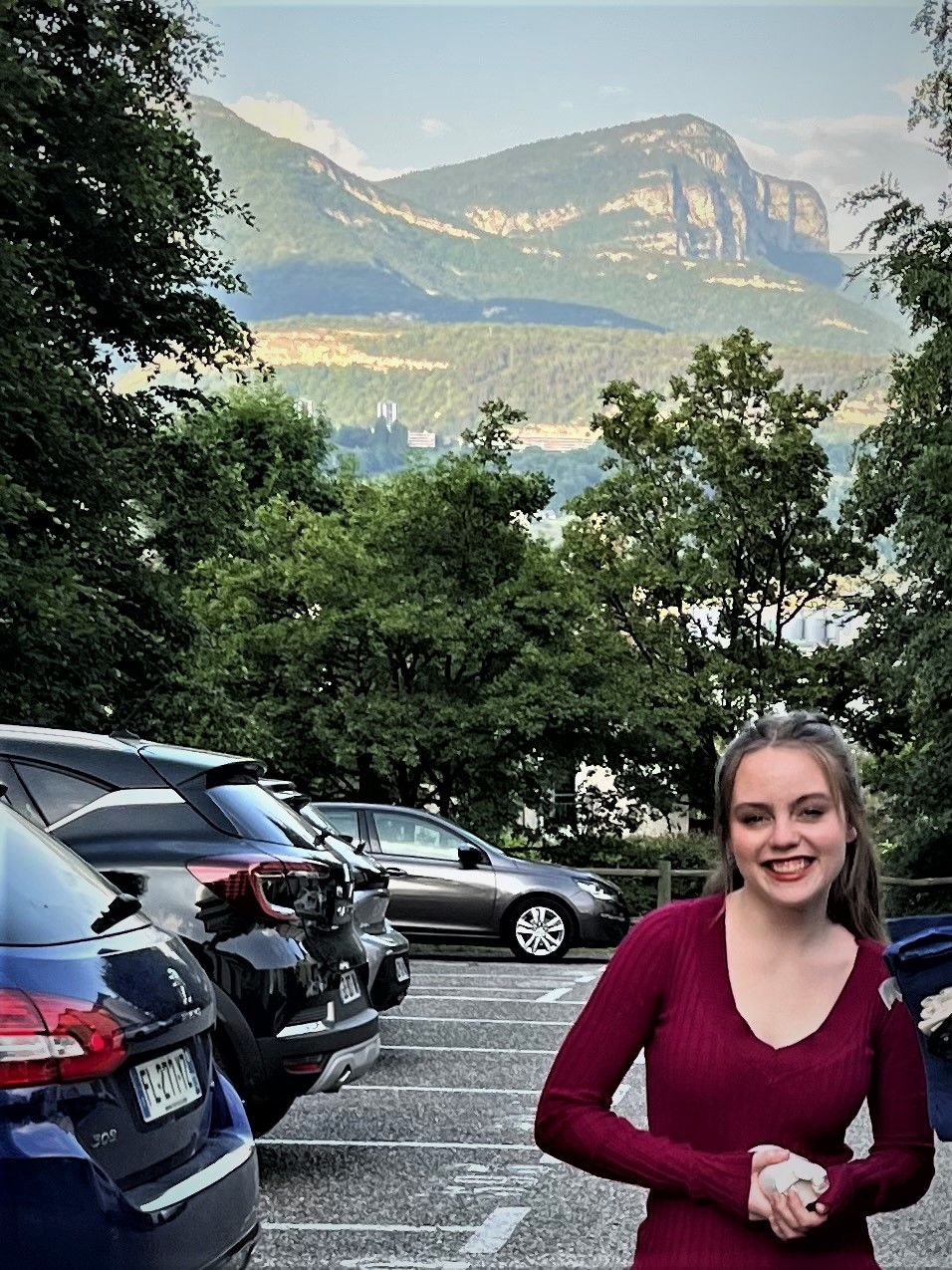Thursday's Columns
September 7, 2023
Our Story
by
Lawrence Abby Gauthier
ace reporter
The Westphalia Periodic News

River in Chambéry, France, where there are mountains.
Americans in Europe
Part 13
Once again I was reminded of what my old friend Jim Elner told me a long time ago in the 70s as I was getting ready to cross the Mississippi to see the American West for myself for the first time. “Remember,” he said, “no matter what you expect, it will be different.”
On the other side of Lake Geneva, we left Switzerland and crossed into France.
It wasn’t what I had expected.
Like when I headed “out West” for the first time as a young writer expecting to find scenes I’d seen in Hollywood “westerns,” I expected France to be like scenes I’d seen in movies or on the news or read about in books.
But just as Jim had told me…
In the first place, I didn’t know that France had mountains like mountains in a movie.
With the exception of Paris and the Riviera on the Mediterranean where Arab sheiks lived a high life and girls went topless, I expected France would be more like… eastern Kansas -- small towns nestled into a landscape of gently rolling hills – basically flat; the only difference, basically, instead of wheat and corn to the horizon, there would be grapes and lavender.
For months before we left for our big trip to Europe, I spent too much time staring at the map of the world on the wall of the room where I write. On a map, France looks like a wide, flat river delta where the entire Eurasian landmass finally dissolves into the ocean, leaving in its wake a pastoral scene with a revolutionary past -- Joan of Arc, the Revolution, Lafayette… May 1968. Not that the whole thing was as flat as Illinois south of Kankakee, or the Mohave, but flat enough that I could have driven my 18-wheeler all the way across it without downshifting once.
But here we were, in France, motoring down a narrow alpine valley surrounded by snowcapped peaks touching the clouds.
How, I wondered, did France get such gigantic mountains? Real ones, like the ones Hannibal had to cross with his elephants and army to attack Rome. I would learn that France didn’t always have them. For most of its history it was like the flatlands washing up against the Alps along its eastern border with Switzerland and Italy, like how the High Plains of America comes up against the Rockies.
You could say there are two kinds of people in the world -- flatlanders and mountain people. Maybe because they feel like their backs are always up against a rock wall, mountain people seem quicker to war. Flatlanders, on the other hand, teach their children about the law.
Where flatlanders and mountain people rub up against one another is the borderland.
For most of Europe’s history, the borderland was ruled by one of two families of mountain people – the Habsburgs and the Savoys, which sounds like the Hatfields and the McCoys.
The Habsburgs started out as local tough guys in a remote Alpine valley in the upper reaches of the Rhine. The Savoys started out the same way in the upper reaches of the Rhone. After the Roman legions left the area, the Habsburgs and the Savoys began to expand their spheres of influence, basically a protection racket. Pay your taxes to us or else bad things might happen.
Through arranged marriages and wars, over the course of the next thousand years the two families became the rulers of all the borderlands -- the Habsburgs in the borderland with Germany and the Savoys in the borderland with France. They made back-room deals to respect one another’s turf, fought in one another’s armies, married, became Catholics. They fought against one another during the 17th century's 30 Years War, but that's too complicated to get into here, involving slightly different hues of Catholicism.
From such humble beginnings, the two families of mountain people rose to rule over most of Europe. Hitching their wagons to the Papacy, the Habsburgs became Holy Roman Emperors. The Savoys ruled the mountainous independent Kingdom of Savoy from Lake Geneva to the Mediterranean along the eastern border of France. The Savoys also ruled Sicily and Sardinia. In the 19th century they became the kings of Italy, which is how France got the big mountains.
It’s a complicated story. In a nutshell, the Savoys gave France half their borderland territories in exchange for help in securing the Italian crown. In 1860, just as our own Civil War was brewing, the western half of the ancient, proud and independent Kingdom of Savoy was officially annexed to France. Many of the locals objected to French rule. The French were flatlanders. They were mountain people. To this day, there are independence movements in the French administrative department of Haute-Savoie, not a threat to the pubic order, but a reminder that we are also our past.
We planned to spend our first three days in France in the city of Chambéry. It had once been the capital of the ancient Kingdom of Savoy. The ruling family had built a castle there that still stood. Culley Jane had a friend who lived there that she’d known since high school. I hoped to find out how the mountain people and flatlanders were getting along.
